Living with Autism – 1
October 29, 2012
Note: Based on the suggestion from Iliane Lorenz at the Horse Boy Foundation (http://www.horseboyfoundation.org/) , this is the first of a series of articles and recipes based on my book: Living Gluten and Dairy-Free with French Gourmet Food. I hope you enjoy them.
A Votre Sante . Chef Alain Braux.
What is the Autism Spectrum Disorder?
Since I started out knowing little about autism, I did some research. Please remember that this chapter is not written by a medical doctor and is offered for your information only. Besides, if you are the parent of a child with autism you already know a lot more than I do about the condition afflicting your child.
According to the Diagnostic and Statistic Manual of Mental Disorders (DSM-IV), Autism Spectrum Disorder or ASD, is a developmental behavioral disorder characterized by socialization and communication impairment. It is also described as stereotypical and restricted patterns in behaviors, interests and activities. Typically, children suffering from ASD present hypersensitivity or hyposensitivity to sensory stimulus. They might display intense reactions to loud sounds, bright lights, unwelcome touch, unknown tastes and smells. They have a hard time integrating with other kids in social situations, changes in their daily routine and adjusting to new things or environments. They also tend to repeat the same behavior and thought processes over and over. They may develop fixations on certain objects or people.
Again, according to the DSM-IV, there are five levels in the autism spectrum. At the higher levels of ability to function in a “normal” environment is Asperger syndrome. Then there is Rett’s disorder, pervasive developmental disorder and childhood disintegrative disorder. On the lowest end of the functioning level (some might argue with that classification) is classic autism, also called Kanner’s autism.
For reasons not yet fully understood, for the past few years the rate of ASD has increased alarmingly in children all over the world. In the U.S., about 1 in 500 children were diagnosed with autism in 1995. In 2000 that rate went up to one in 250. According to the Center of Disease Control and Prevention (CDC), the latest survey shows that about one in 120 children are afflicted with autism.
What is it about Gluten and Casein that Makes Some Children Sick and Not Others?
Although this scientific answer is not absolute, it is believed by some researchers that “leaky gut syndrome” is the cause of your child’s misery. According to Dr. Karl Reichelt, M. D., director of clinical chemistry at the Department of Pediatric Research at Riskhospitalet in Oslo, Norway, many children with ASD suffer from a leaky gut where the damaged villi lining the child’s small intestine allows incompletely digested proteins (also called peptides) like gliadin and casein to pass through the intestinal wall into the bloodstream. He noticed that to these affected children, these proteins turn into opioid peptides called gliadomorphin and casomorphin. After passing through the leaky gut, these opioid peptides move through the bloodstream and into the brain where they attach themselves to opiate receptors, creating an assortment of sometimes extreme sensory reactions and behaviors, similar to how a normal person might behave under the influence of opiate drugs. Remove these peptides from your child’s diet and there will be a good chance that his behavior will improve. Please know that this GFCF diet does not work for all children. Some parents still report some form of Pervasive Developmental Disorder (PDD) and other possible social difficulties. But in many cases, this diet is effective and deserves to be looked at. After being on this diet for a while, many of these children would not be diagnosed with ASD, according to the DSM IV criteria. So, talk to your local DAN! (Defeat Autism Now!) doctor and ask him/her for help with this diet.
I first found information on the gluten/casein free diet when my oldest son was six. He was not diagnosed with autism until age seven, but my husband and I knew well before the professionals did. Not only did we suspect autism, but also our son had suffered horrible gastrointestinal issues since around the age of two. We decided to consult an environmental allergist the summer he was diagnosed with autism, who suggested we give the gluten/casein free diet a trial for two weeks. If we did not see results then we could say that we tried and move on, but if behaviors, skin issues, or the gastrointestinal issues changed for the better, even if only slightly, we could keep going. I remember making the phone call back to the Environmental Allergist after two weeks to let him know that GFCF would be the life path for us after all. Within that two week trial period our son quit chewing on nonfood items, he was calmer, and had stopped interrupting people when they spoke. Family and friends that had no idea we were trying something new were asking us what we had changed in his life because even they saw results.
In the beginning the GFCF diet was not easy. Having a dairy allergy since birth, I was fully aware what products contained dairy and how to read ingredient labels for casein. Gluten on the other hand was much more difficult. Outside of wheat I had no idea what other grains contained it, and which ones were still safe for us to consume. The recipes I found for gluten free baked goods had a number of ingredients I had never heard of before, like xanthan gum, guar gum, teff, and millet. It was discouraging at first, but then it dawned on me that this probably was going to be permanent. That because of my son’s severe gastrointestinal issues and autism he would probably need to be gluten/casein free for a very long time, potentially forever. I set out to purchase some gluten free cookbooks, made a long trip to Whole Foods, and joined online parenting groups for autism and diet. I started baking muffins, cookies, and cakes that my son fully enjoyed. As my baking trials succeeded, I gained more confidence in being able to feed my son nutritional meals and snacks that stayed within the gluten/casein free diet.
It has been five years now since that appointment with the Allergist. In the last five years we have seen so many gains in our son’s health and behavior. Thanks to dietary intervention he no longer has rage episodes, chews on nonfood items, or has behavior issues at school. I have seen so many improvements in his health that it has inspired me to go back to college to work on a bachelor’s degree in holistic nutrition so I can share my experiences with other families. This diet can change your life! Is it difficult? In the beginning, yes. Is it worth the time and effort? Absolutely!
Kecia J – Austin, TX
Pain Sans Gluten a la Farine de Sarasin. Gluten-Free Buckwheat Bread
This is a heavy but tasty bread. It will last you a long time.
Yield: One 2 lb, 4-oz loaf
Oven Temp: 425F
This recipe is GFCF
INGREDIENTS
– 8 oz Water, warm
– 7 oz Soy or Almond milk, warm
– 1 Tbsp Agave nectar
– 2 tsp Instant dry yeast
– 3 oz Eggs (about one and a half)
– 8 oz Buckwheat flour
– 6 oz Brown rice flour
– 1 tsp Sea salt
– 1.5 tsp Xanthan gum
PROCEDURE
1. Place a measuring cup on top of the scale. Zero it out. Weigh and mix together water, soy milk, agave nectar, and yeast. Cover and let sit in a warm place for about 15 minutes until the mix foams. Add the beaten eggs. Mix in.
2. Place your mixer’s bow on the scale. Zero it out. Weigh the buckwheat, rice flour, salt and xanthan gum.
3. Fit the mixer with the whisk attachment. Start the mixer at low speed.
4. While running, pour the liquids into the flours. The batter should be soft.
5. Pour into a paper or aluminum-lined 9 x 4 x 4 loaf pan. It should be halfway full.
6. Cover with a clean towel. Place in a warm place. Let the dough rise for about an hour until it rises 50 percent more.
7. Meanwhile preheat your oven at 425F.
8. Bake the bread for about 35 to 40 minutes until it sounds hollow. Let cool for a few minutes.Take out of the pan and place on a grid to dry.
Chef Alain Braux
From: Living Gluten and Dairy-Free on Amazon.com
More to come…
Disclaimer: This book has been written as an educational tool only. It is not a substitute for the informed medical recommendations of your personal physician or other qualified healthcare provider.
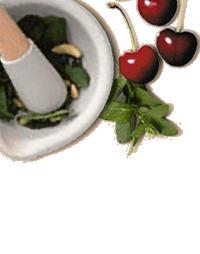
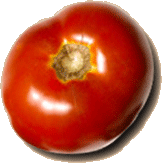
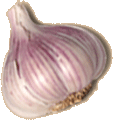
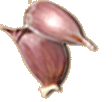
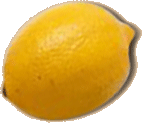
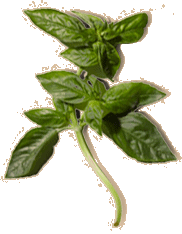


leave a comment